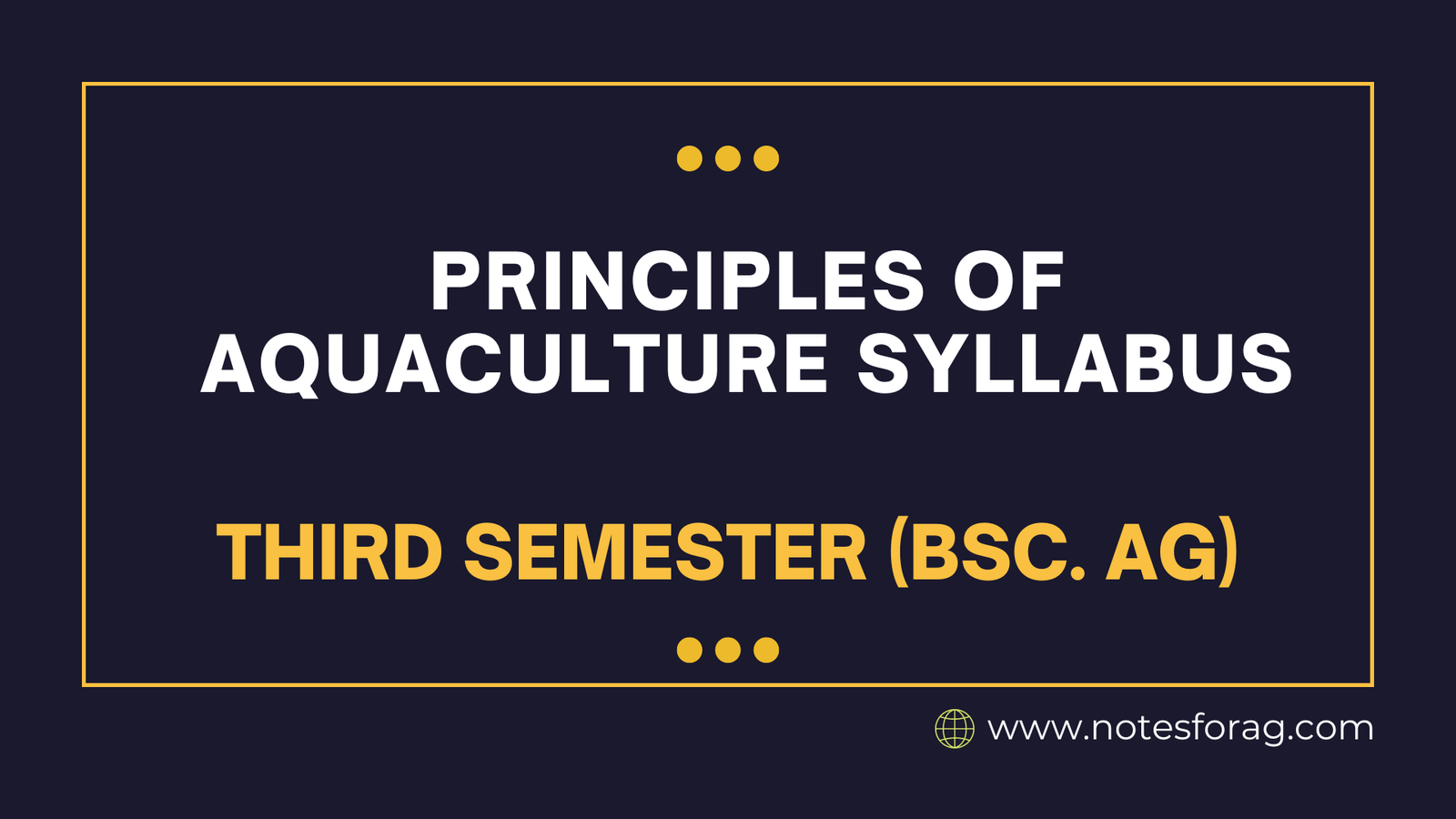| Course Code | AQU 201 |
| Course Title | Principles of Aquaculture |
| Credit Hour | 2(1+1) |
| Full Marks | 50 |
| Theory | 25 |
| Practical | 25 |
Objectives
Upon the completion of the course, the students will be able to explain the characteristics of cultivable and cultivated fish species, and their management practices.
Syllabus of Principles of Aquaculture in Bsc. Agriculture
Definition and biological characteristics; water quality management; pond management; fish farming systems; fish breeding, nursing and rearing; common fish diseases and parasites.
Course Outline
A. Theory
B. Practical
| S.N | Topic / Chapter Name | No. of Lectures. |
| 1 | Visit of a fish farm | 1 |
| 2 | Morphology of cultivated fishes of Nepal | 1 |
| 3 | Anatomy of fish (internal organs – alimentary canal, gills, gonads) | 1 |
| 4 | Pond types and measurements of a typical pond | 1 |
| 5 | Pond liming and fertilization | 1 |
| 6 | Water quality measurements (temperature, transparency, DO and pH) | 1 |
| 7 | Feed formulation and Feeding | 1 |
| 8 | Study of different fish farming system | 1 |
| 9 | Common carp breeding | 1 |
| 10 | Study of fishing gears and pond netting | 3 |
| 11 | Examination of skin and gills | 1 |
| 12 | Identification of common drugs and chemicals used in fish health 1 management | 1 |
| 13 | Lab wrap up | 1 |
| Total | 15 |
References
- Augusty, K.T. 1979. Fish Farming in Nepal. Archana Printers & Publishers, Kottayam 29, India.
- ICAR. 2006. Handbook of Fisheries and Aquaculture. Indian Council of Agricultural Research (ICAR), New Delhi.
- Jha, D.K. 1991. Laboratory Manual of Fish Disease. Tribhuvan University, IAAS, Rampur.
- Jhingran, V.G. and R.S.V. Pullin. 1985. A Hatchery Manual for the common, Chinease and Indian Major Carps. Asian Development Bank, ICLARM, Manila, Philippines.
- NACA. 1989. Integrated Fish Farming in China Technical Manual 7. A World Food Day Publication of the Network of Aquaculture Centre in Asia and the Pacific, Bangkok Thailand.
- Shrestha, M.K. and N.P. Pandit. 2012. A Text Book of Principles of Aquaculture (Second Edition). Aquaculture Department, Institute of Agriculture and Animal Science, Rampur, Chitwan, Nepal.
- Shrestha T.K. and D.K. Jha. 1993. Introduction to Fish Culture. Institute of Agriculture and Animal Science, Rampur, Chitwan, Nepal.
- Woynarovich, E. and L. Horvath. 1984. The Artificial Propagation of Warm Water Finfishes, A Manual for Extension.

